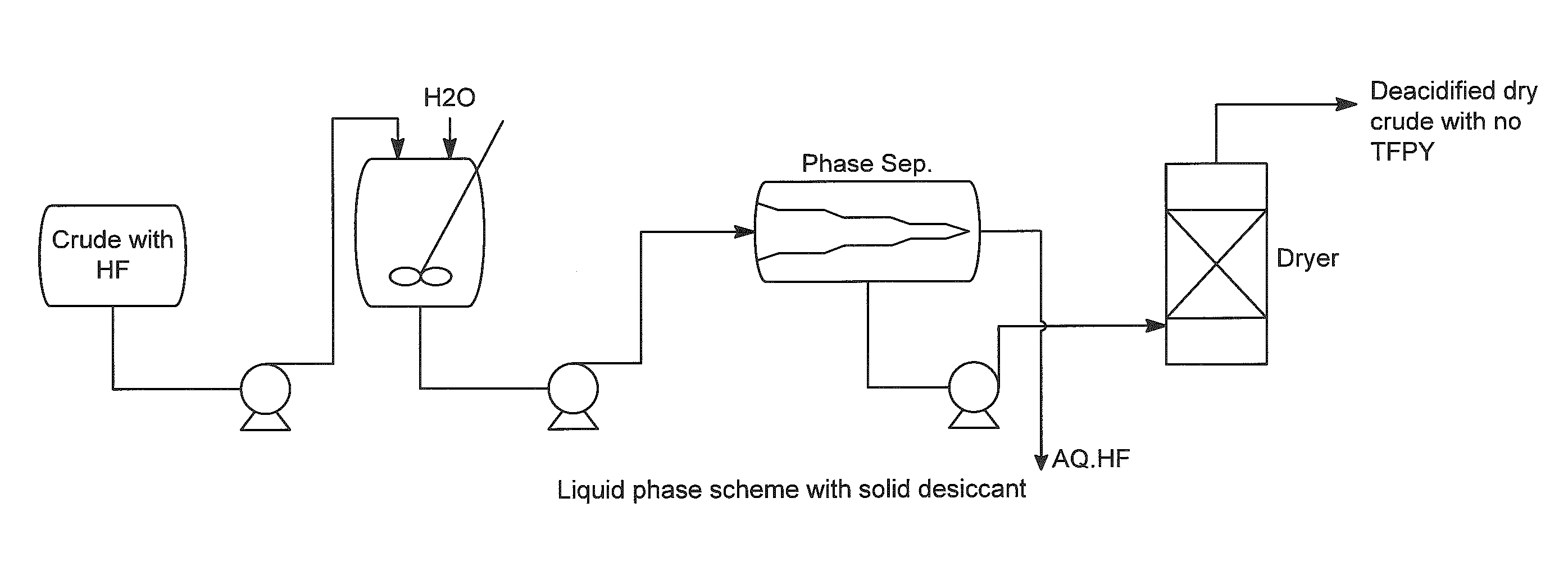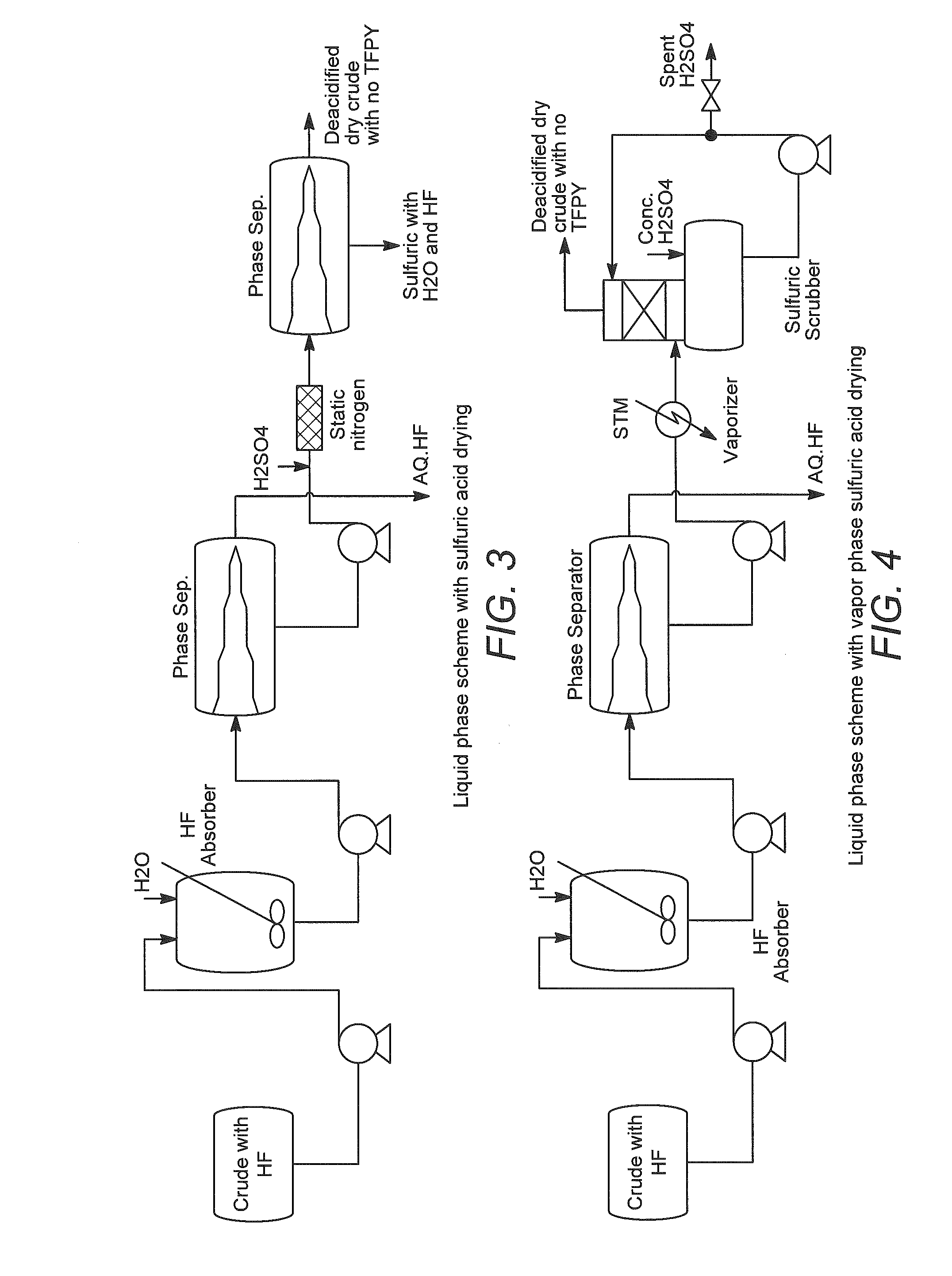Process to suppress the formation of 3,3,3-trifluoropropyne in fluorocarbon manufacture
a technology of trifluoropropyne and fluorocarbons, which is applied in the field of process for suppressing the formation of 3, 3, 3trifluoropropyne, can solve the problems of increasing capital investment and operational costs associated with the production of one or more of the above compounds, and the removal of trifluoropropyne necessarily increases capital investment and operational costs. , to achieve the effect of reducing the amount of moisture, reducing the cost and high affinity for h
- Summary
- Abstract
- Description
- Claims
- Application Information
AI Technical Summary
Benefits of technology
Problems solved by technology
Method used
Image
Examples
example 1
[0035]1233zd is produced via the methods described in the specification of US Patent Publication No. 2012-0172636, which is hereby incorporated herein by reference. The crude product contains a maximum of about 50 ppm 3,3,3-trifluoropropyne.
[0036]The crude product exiting the reactor is subjected to HCl recovery and HF recovery to recover a stream with the following composition:
Componentwt %1233zd (E)85.4% 1233zd (Z)4.0%Other organic7.3%impuritiesHCl0.1%HF3.2%3,3,3-trifluropropyne
[0037]The temperature of the feed stream is approximately 46° C. and the pressure is approximately 10 psig.
[0038]The above stream is fed to an HF Absorber which has a supply of once-through fresh water feed at ambient temperature (approximately 25° to 30° C.). The HF Absorber is packed with random packing and has sufficient theoretical stages for absorbing at least 99% of the incoming HF. The amount of water is adjusted to produce a nominal 5% solution of aqueous HF as well as supply sufficient wetting of t...
example 2
[0040]99.9% pure 1233zd(E) was passed through a scrubber (dimensions of the scrubber column: 6 inch diameter, 10 foot height) circulating dilute NaOH solution at pH 10. The feed rate of 1233zd(E) was maintained at 1-2 lbs / hr. The product exiting the scrubber was passed through a Drierite (CaSO4) drier and sampled. No 3,3,3-trifluoropropyne was observed in the collected samples.
example 3
[0041]Example 2 was repeated except the pH of circulating solution was about 8. Again, as in Example 2, no 3,3,3-trifluoropropyne was observed in the collected after scrubber and drier samples.
PUM
 Login to View More
Login to View More Abstract
Description
Claims
Application Information
 Login to View More
Login to View More - R&D
- Intellectual Property
- Life Sciences
- Materials
- Tech Scout
- Unparalleled Data Quality
- Higher Quality Content
- 60% Fewer Hallucinations
Browse by: Latest US Patents, China's latest patents, Technical Efficacy Thesaurus, Application Domain, Technology Topic, Popular Technical Reports.
© 2025 PatSnap. All rights reserved.Legal|Privacy policy|Modern Slavery Act Transparency Statement|Sitemap|About US| Contact US: help@patsnap.com



